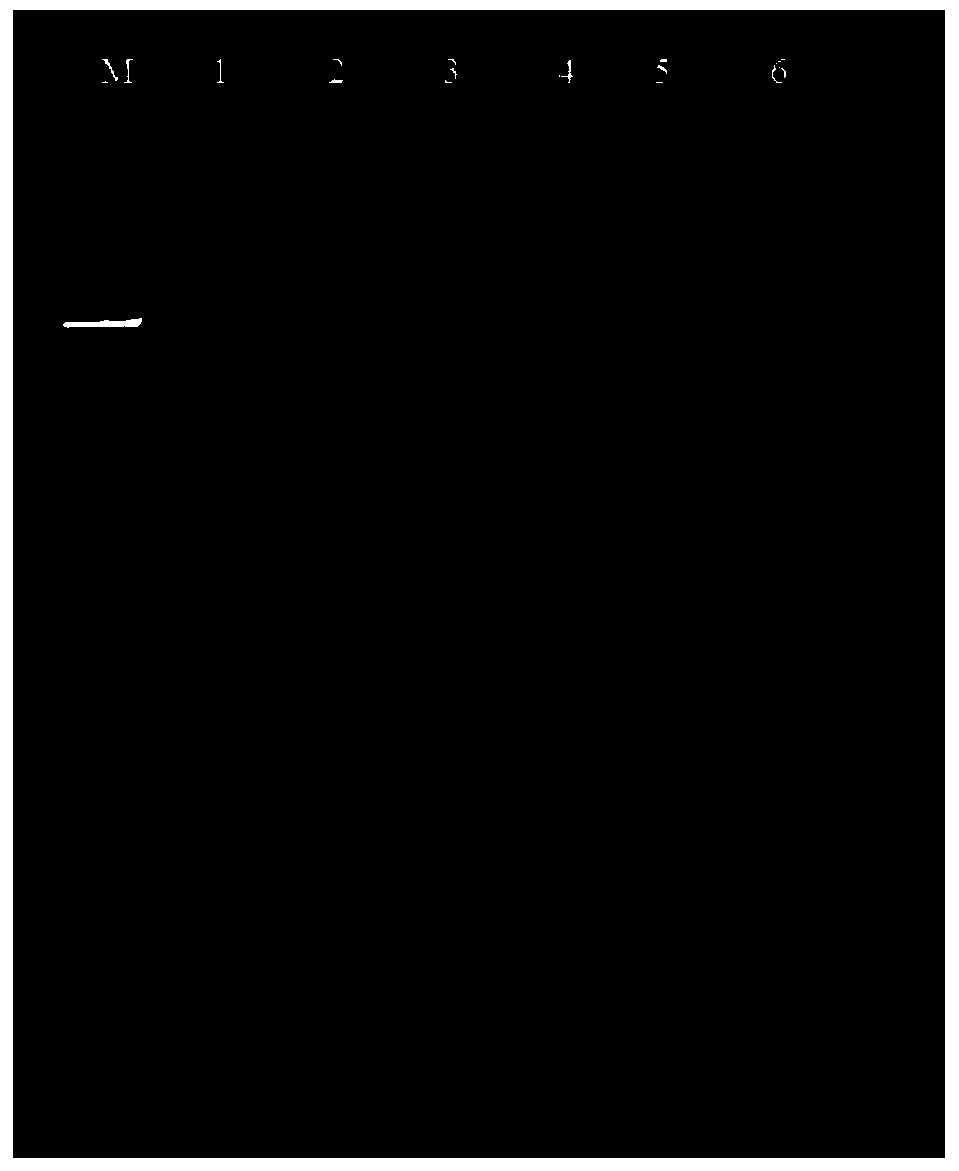Liriodendron cellulose synthase gene lccesa1 and its expression protein and application
A technology of cellulose synthase and Liriodendron, applied in the field of plant gene technology, can solve the problem of insufficient research on catalytic synthesis products, and achieve the effect of promoting the accumulation and wide application of cellulose
- Summary
- Abstract
- Description
- Claims
- Application Information
AI Technical Summary
Problems solved by technology
Method used
Image
Examples
Embodiment 1
[0038] Example 1 LcCESA1 clone of and LcCESA1 Overexpression vector construction
[0039] 1. Primer design: According to the transcriptome data of Liriodendron thaliana, compared with that of Arabidopsis CESA1 CDS sequence prediction of genes LcCESA1 Gene sequence, and design specific CDS full-length primers suitable for Gibson Assembly.
[0040] LcCESA1 CDS full-length primers: Primer-F: 5'-GAGAACACGGGGGACTCTAGAATGGAGGCGAATGCTGGAATGGT-3'; Primer-R: 5'-ATAAGGGACTGACCACCCGGGGCAGTTGATGCCACATTGGTTTGC-3'.
[0041] 2. Cloning of the target gene: using Q5 ultra-fidelity enzyme to perform PCR amplification on the cDNA sample of Liriodendron tulipifera to obtain the band of the target gene.
[0042] (1) System: 3 μL ddH 2 O, 5 μL Q5 ® Ultra-fidelity 2×Master Mix, 0.5 μL Primer-F (10 μM), 0.5 μL Primer-R (10 μM), 1 μL cDNA.
[0043] (2) PCR reaction program: 98°C for 30s; 98°C for 10s, 72°C for 30s, 72°C for 2min, 35 cycles;
[0044] 2min at 72°C; store at 4°C.
[0045] 3. C...
Embodiment 2L
[0058] Example 2 LcCESA1 Identification and Screening of Transgenic Arabidopsis
[0059] 1. Arabidopsis culture
[0060] 1) Disinfection of Arabidopsis seeds: put an appropriate amount of wild-type Arabidopsis seeds into a sterilized EP tube, add an appropriate amount of 75% ethanol, oscillate and sterilize for 30 seconds, and then suck it out; add the same amount of 0.1% mercury liter, and sterilize for 2.5 minutes Aspirate (discard in special waste liquid tank); add the same amount of deionized water, shake and wash, aspirate and put the seeds in a new EP tube; repeat washing with water four times.
[0061] 2) Cultivation of Arabidopsis thaliana: Put the sterilized seeds in the suspension, and use a pipette gun to evenly sow them into 1 / 2MS medium; seal the medium, and put it in a refrigerator at 4°C for vernalization for 3 days; The vernalized medium was placed in a constant temperature culture room at 23°C for 7 days; when the Arabidopsis seedlings grew 2 true leaves, th...
Embodiment 3L
[0092] Example 3 LcCESA1 Observation on Microstructure of Transgenic Arabidopsis Regenerated Plants
[0093] Prepared with Example 2 LcCESA1 Transgenic Arabidopsis T3 seeds were used as plant material, and wild-type Arabidopsis was used as control. LcCESA1 Microstructural observation and comparison of regenerated plants of transgenic Arabidopsis thaliana.
[0094] 1. Arabidopsis culture
[0095] 1) Disinfection of Arabidopsis seeds: Take an appropriate amount of wild-type Arabidopsis seeds and put them into the sterilized EP tube, add an appropriate amount of 75% ethanol, oscillate for 30 seconds and then suck out; add the same amount of 0.1% mercury liter, and oscillate for 2.5 minutes Then suck it out (discard it in a special waste liquid tank); add an equal amount of deionized water, shake and wash it, suck it out and put the seeds in a new EP tube, and repeat the water washing four times.
[0096] 2) Cultivation of Arabidopsis thaliana: Put the sterilized seeds in the ...
PUM
 Login to View More
Login to View More Abstract
Description
Claims
Application Information
 Login to View More
Login to View More - R&D
- Intellectual Property
- Life Sciences
- Materials
- Tech Scout
- Unparalleled Data Quality
- Higher Quality Content
- 60% Fewer Hallucinations
Browse by: Latest US Patents, China's latest patents, Technical Efficacy Thesaurus, Application Domain, Technology Topic, Popular Technical Reports.
© 2025 PatSnap. All rights reserved.Legal|Privacy policy|Modern Slavery Act Transparency Statement|Sitemap|About US| Contact US: help@patsnap.com



